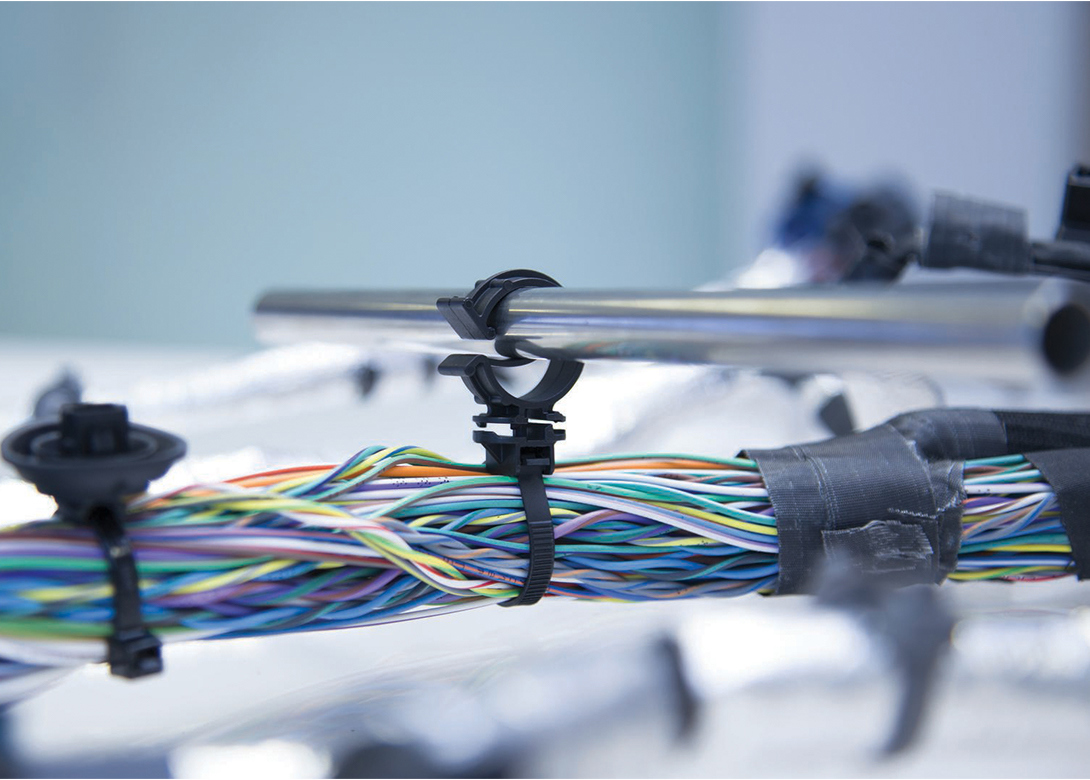
C-clips are a type of retaining ring used to hold an assembly together. The devices consist of a semi-flexible ring or clamp with open ends that can be snapped into place. These components can be precision engineered to accurately position and retain parts and are commonly used in different automotive and trucking parts.
ARaymond’s customer typically relied on this C-clip type of component to retain certain tubes and wires as part of their truck’s diesel exhaust fluid systems. For the most part, this worked fine but there was room for improvement.
“Our customer previously used a C-clip styled part, which is very similar to a component that we also manufacturer. It was effective enough for them, but maybe not as efficient or ideal as it could be. So, they wanted to know if we could design a clip that could retain multiple tubes,” says Jason Reznar senior development engineer at ARaymond. The C-clip the customer originally used could only hold up to two tubes together. “They wanted to turn this into a quad clip for their application, which could hold up to four tubes. We enjoy challenges. It’s quite rewarding to problem solve and develop or redesign products that quite simply work more effectively for our customers.”
“It’s critical to start such a project with as much information about the application as possible,” says Reznar. “For example, this customer had specific criteria we had to meet because the exhaust system is quite a complicated area with only so much space and certain attachment and mounting requirements.”
Part of this criteria comprised of the tube dimensions and features — including length, diameter size, material (rigidity was a factor in this case); as well as the location of other parts - particularly, the components to stay clear of; the placement or mounting scheme - such as the direction of the tubes, where they can be attached, which ones must be separated, along with any spacing considerations.
“There are multiple things that we must factor in when it comes to tube or wire management. For this project, it was important to keep the tubes separated from one another, as opposed to using a tie strap. So, this meant designing a new clip, as well as properly orienting its placement in relation to the other tubes.”
Reznar explains that the reason for the separate placement of the tubes was partially cleanliness and aesthetics - one quad-clip meant the use of several C-clips to perform the same function was unnecessary. But, perhaps more significantly, it was about efficiency.
“Let’s say there are maintenance issues down the line that occur in the exhaust system. Now, errors are far less likely if someone only has to pull one tube instead of four to make the repair.”
What’s more - the engineers had to monitor the insertion and watch the retention forces on the clip. “The C-clip has no closing latch and is simply pushed into place and, essentially, holds itself. So, we needed to balance the insertion versus the retention to ensure that in a 90 degree bend, the tubes would remain in place.”
Fortunately, the prototypes were fairly simple for ARaymond to create, thanks to its additive manufacturing capabilities, which helped expedite the process. Also referred to as rapid prototyping or 3D printing, the additive manufacturing process uses successive layers of material to create 3D objects. This capability allowed ARaymond to create a quick and cost-effective model of the quad-clip once designed and ship it to the client for testing before committing to the final product.
“Thanks to the prototype, we quickly learned that the tubes were troublesome, adding extreme forces to the mounting scheme we had originally planned for this assembly,” he says. The team had to devise an alternative solution.” The newly designed quad-clip offered several benefits for ARaymond’s customer, including a less costly and more orderly assembly.

Having spent a decade in the fastener industry experiencing every facet – from steel mills, fastener manufacturers, wholesalers, distributors, as well as machinery builders and plating + coating companies, Claire has developed an in-depth knowledge of all things fasteners.
Alongside visiting numerous companies, exhibitions and conferences around the world, Claire has also interviewed high profile figures – focusing on key topics impacting the sector and making sure readers stay up to date with the latest developments within the industry.
Don't have an account? Sign Up
Signing up to FastFixTechnology.com enables you to manage your account details.